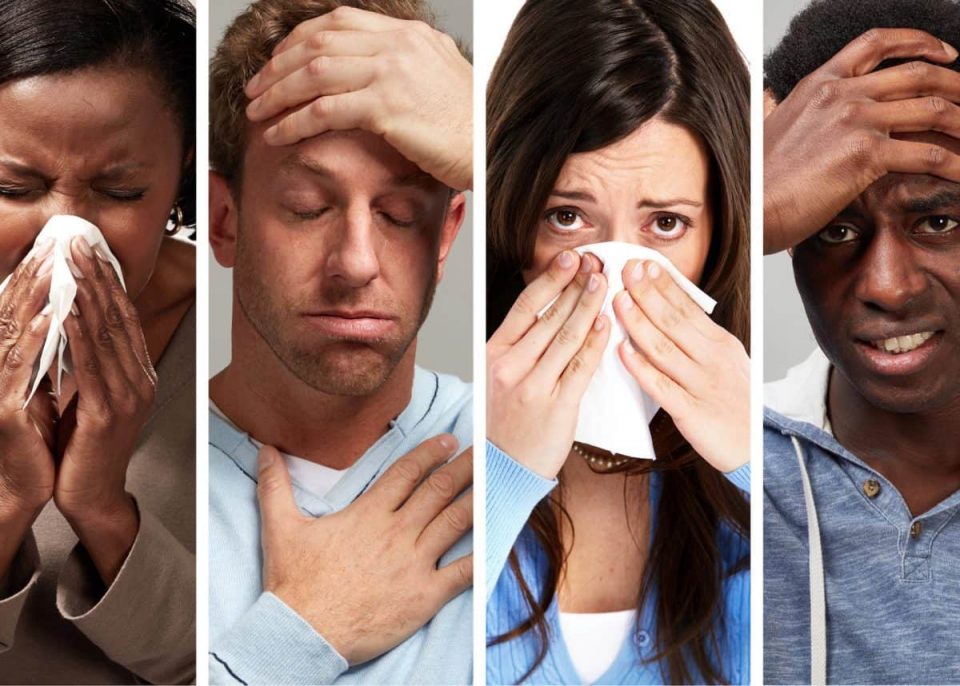Health and Fitness

Allergies have become more prolific in the last 50 years. Image via Adobe Stock
Last week we looked at the four types of allergic reactions the body has. Understanding always helps us to find answers, yet you could exhibit aspects of all four reactions and treating allergies may become difficult again.
The increase in allergies is surpassing diabetes.
In the US 50 years ago, one in fifty people was allergic. This has increased to one in three. Why such an astronomical escalation? What has happened in our diets and environment that could have caused this?
Why are more people showing signs of allergies?
In his book The Allergy Solution, Dr Leo Galland gives reasons for this phenomena. He classifies allergens into four groups: external environment, indoor environment, internal and dietary.
With the external environment he refers to factors that have caused global warming and increased CO levels. He connects the increase in the automotive industry and specifically diesel exhaust fumes with this.

The link between plants growing in areas with high diesel exhaust fumes, which produce much larger percentages of allergens than the same species of plant growing away from these fumes, has been made. Further studies showed allergic people have aggravated allergic reactions when exposed to diesel exhaust fumes.
With indoor allergens the chemical formaldehyde was identified as a major culprit. A fixing agent, sources of this can be found in laminated or wood glue products, new clothes that are stiffened, new carpets and some cleaning products — even creams.
Look out for names like formalin, formic aldehyde, methanediol, methanal, methyl aldehyde, methylene glycol and methylene oxide. Again, there has been a direct link made between air levels of formaldehyde and levels of allergies in the home.
Internal allergens refer to the disturbed microbiome — the good bacteria found in your gastro intestinal tract, sinuses and respiratory tract, female gynaecology and skin.
The research about the complexity of the human microbiome that outnumbers our cells ten to one is ongoing, exciting and complex. A lot has been written about the chemical triclosan, found in 75% of hand washes and in many antibacterial products.
This chemical kills the good bacteria, on a slow day-to-day basis. Reducing the types of bacteria and impacting on the signals sent from these bacteria that regulate our immune response leads to increased allergy levels.
Dietary allergens refer to deficiencies that occur due to a limited diet or a diet high in trans fats and sugars (like fast foods). Deficiencies like zinc, selenium and bioflavanoids that support regulatory T-cells, lead to increased allergies, increased inflammation and often increase in weight.
Dealing with our allergies
It is mostly not within our control, to move to a place away from pollution. It is within our power to increase fruit and vegetables. If at all within your budget, eating organic meat, fruit and vegetables will support a decrease in allergies.

Taking zinc, selenium and betacarotene supplements will help support your T-cells and should decrease your allergies.
Washing and airing out new clothes, carpets and avoiding products with formaldehyde and triclosan will also help. The broccoli extract sulforaphane has shown to decrease the ability of diesel exhaust fumes to cause allergies in the body.
Even though foods like turmeric, nuts, seeds and fish help to increase the diversity of the gut microbiome, this does not mean you can tolerate them.
It is trial and error to see which foods agree or disagree with you. When making fundamental changes to your diet, the intent is to restore your immune response to a more normal one.
When your allergies are treated conventionally, it doesn’t stop the allergies, it treats the allergic mediators from the mast cells and eosinophils that are activated in a allergic response.
When looking at additional treatment regimes, the intent is to reduce this reaction. The hope is that you will need the conventional treatment regimes less, or eventually not at all.
Homeopathy, herbs, essential oils, relaxation techniques, food supplements and colour therapy — when used in combination — often restore the incorrect immune response.
Via- The South African

